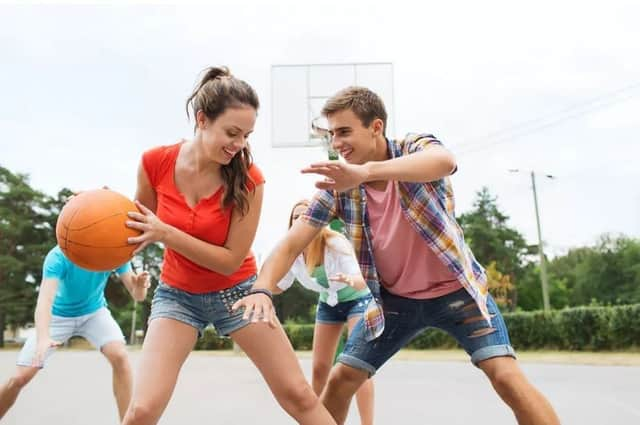Six ways to get teenagers more active '“ suggested by the teens themselves


This article contains affiliate links. We may earn a small commission on items purchased through this article, but that does not affect our editorial judgement.
The UK department of health recommends that young people (aged five to 18) should get at least 60 minutes of physical activity a day. But not enough teenagers actually do.
Advertisement
Hide AdAdvertisement
Hide AdIn schools, children and teens are taught from a young age about the benefits of being active. They should know that it reduces the risk of obesity, coronary heart disease and diabetes, and increases well-being. Yet the lack of teenagers’ activity has become such an issue that it is now a serious public health concern.


Try as they might to implement physical activity schemes for British young people, it seems that the work of public health policy makers is not reaching everyone. Though leading experts are contributing to plans with interventions such as the Daily Mile, we have found a missing link – the teens themselves. Researchers and policy makers play a vital role in designing physical activity schemes, but they often do not speak directly to the groups they want to target.
For our latest project, ACTIVE (The active children through individual vouchers evaluation project), we wanted to give young people the chance to make their own recommendations to help others of the same age be more active now, and carry on being active in the future.
We worked with more than 70 teenagers from seven secondary schools in Swansea to come up with a list of easily implementable recommendations.
Advertisement
Hide AdAdvertisement
Hide Ad1) Lower cost without sacrificing quality


The teenagers we worked with said that lowering the cost of activities would help them become more active. They recommended that more free activities should be available – although teenagers were aware that when places lower their prices, the quality of the activity/venue also drops. One way to tackle this would be to offer activities that do not need coaches or referees but allow teenagers to play freely, making their own games and rules in a safe space.
Working out.Rob Marmion/Shutterstock
2) Make activities local
Removing the need to travel to venues would go some way towards making physical activity more available to teenagers. The teens we worked with said they were happy to organise their own activities if they had facilities close to where they live. They did not mention the need for coaching, just a need for a space to play. All they want nearby is the space to participate in unstructured, non-competitive forms of their favourite sports.

